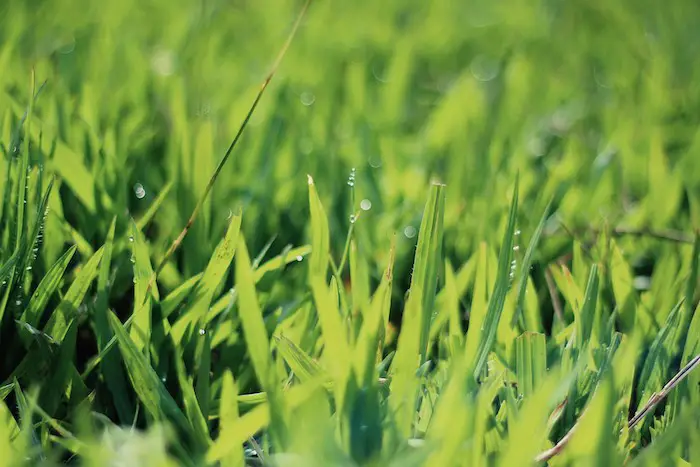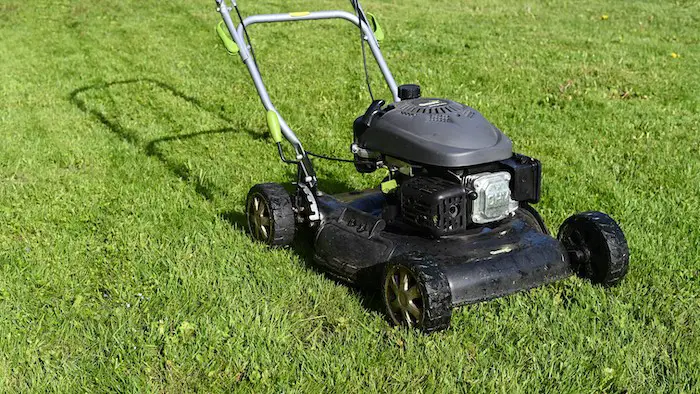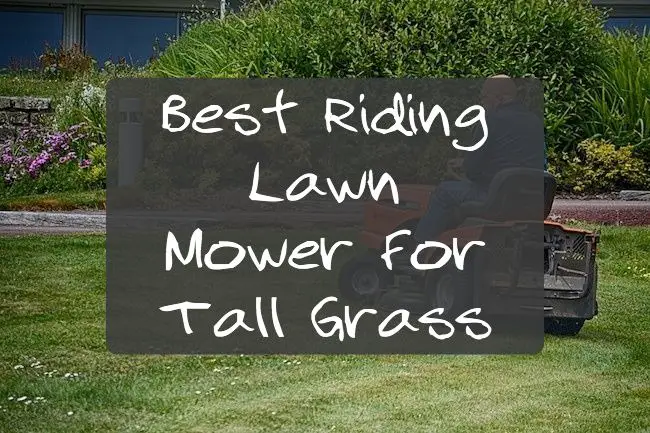There are several reasons why your lawn could be wet, from a torrential downpour, gentle rainfall, and sometimes heavy morning due. Does a wet lawn interfere with our weekend mowing schedule? Is it okay to mow wet grass, or is it a big mistake?
Will mowing wet grass ruin your lawn mower? Yes, mowing wet grass can damage a lawnmower. For starters, wet grass can be quite cumbersome to cut; this may strain the lawnmower, causing it to overheat, which eventually may lead to damage. Other than that, mowing wet grass results in large clippings clumped together due to the wetness. The lumps tend to block the mowers deck. Unblocking the deck is quite some work and should it be ignored, it can damage the mower.
Other than damage to the lawn mower, there are other reasons why you should not mow wet grass. In this article, we will look at reasons not mow wet grass, tips on how to mow wet lawn if need be and other related questions. Keep reading to find out more.
Reasons Not to Mow Wet Grass
Other than damaging your lawnmower, cutting wet grass is not allowed for other reasons including:
- Personal safety– Mowing wet grass exposes you to extremely dangerous accidents. For starters, the grass is wet, meaning it is slippery. On the other hand, the blades to your mower are sharpened, ready for work. Should you slip and fall, you may end hurt by the blades, whether you are pushing the mower or driving it. Unless a decent lawn is worth the accident, we recommend you wait for the grass to dry up.
- Zero progress- Accidents in wet lawns are frequent. It does not matter the power of the mower or your expertise at mowing. If an accident occurs, your lawn will get damages and its intended aesthetic look will not be achieved.
- Rut damage- If the grass is wet, the soil is most definitely wet as well. This increases the risk of rut damage and uprooting the grass’s roots when the tires of the mower move over the grass. Fixing the results of the damage can be quite expensive as it may require you to plant new grass. Therefore, always be on the lookout. If the soil looks muddy, soft or slippery, it is better to wait before cutting the grass.
- Clumping– As mentioned above, cutting wet grass leads to clumping that tends to block the mower’s deck. Other than that, clumping is a threat to the lawn itself. Usually, cut grass is left behind on the lawn as mulch. When it is wet and clumped, then left on the lawn, it may block the remaining plants that are alive. In some cases, clumping may cause death to the plants.

- It is a health risk to your lawn– Diseases in plants or grass are more likely to happen if the grass is wet. They include fungal infections. If a section of your lawn has an infection, mowing wet grass will spread the fungal to all other parts of the lawn. The worst part is that the disease will thrive at the expense of your lawn due to the wetness.
- Stains on your shoes and clothes– Wet grass is more likely to stain your shoes and clothes during mowing than dry grass. Therefore, if you are looking to reduce the burden of doing your laundry, we recommend that you wait for the grass to dry up before mowing.
- Double effort- Generally, mowing wet grass is double work. It consumes more time and energy. Here is how. For starters, as mentioned above, wet grass will stain your clothes and shoes. That is to say, it will take you double efforts to get rid of the stain instead of the effort you would use on regular dirty clothes. Secondly, due to rug damage and clumping, the lawn will not be as neat. Most of the time, after mowing wet grass, you will want to do it over again. As such, most likely, you will mow the lawn sooner than it should be. Also, there are many adjustments you will have to make to the mower if you want it to survive wet grass. The adjustments will take more time and effort.
Even with all the reasons why you should not mow wet grass highlighted above, sometimes circumstances may force you to do it anyway. So how do you cut wet grass safely?
Tips on How to Mow a Wet Lawn Safely
During winter or in times of continual rainfall, you may have no alternative but to cut the grass. The good news is, although not recommended, there is a safe way to mow a wet lawn. Before we look into the tips, note that cutting wet grass should not be a routine, but only do it if the need arises.
- Raise the Mowing Deck
Since the grass is wet, your mower is under more pressure to cut the grass, which could cause it to overheat. Therefore, to reduce the stress on the machine, we recommend moving your deck one setting higher than its regular setting.
If you choose a setting that is too low, you will put too much stress on the engine of the mower and overwork it. A high mowing height on the hand makes your work smoother and easier. Also, a high height decrees the number of clippings and clumping on the mower.
- Sharpen the Blades
Before mowing your wet lawn, we recommend that you have the blades sharpened. As said before, wet grass is not cut cleanly. It results in clumping, which has its dangers. So to reduce the chances of clumps, have the blade of the mower sharpened for a cleaner cut. Other than that, note that dull blades tend to shred the grass rather than cut it. This means your lawn is left in rugs. Rugs, on the other hand, increase the chances of your grass getting an infection.
- Clean the Clippings of The Lawn
Leaving behind the clippings of cut grass increases the chance of blocking the grass and, eventually, death. The clippings also increase the risk of infection to the lawn. As such, you want to make sure that you get rid of the clippings after cleaning. You can remove the clumping using a rake to make sure you do not step on the mowed lawn.
- Clean the Mower after the Entire Process
Since the grass is wet, there may be some clippings stuck in the mower’s blades or the underside of the cutting deck. It is almost unavoidable. That is why we recommend that you clean your mower after the lawn mowing process.
Should you leave this grass on the mower, you increase the chances of moss growing on the blades and other parts of the machine. The next time you mow your lawn, you will be spreading this moss and fungi, which is a threat to your grass’s health.
Other than moss, leaving the metallic parts of a mower such as the blades dirty and wet increasesthe chance of the mower rusting. Rusting, on the other hand, will reduce its efficiency.
See Also: Can You Pressure Wash A Riding Lawn Mower?
Related Questions
How do I tell the grass is too wet for mowing?
If you are not sure if the grass is too wet for mowing, you should inspect the lawn. If the grass is bent over, then the lawn is wet. It is recommended that you cut the grass when t upright. Alternatively, you can try to mowing row. Should the mower get bogged down, then it is too wet to mow. Another way to tell if the lawn is too wet for mowing is by checking the soil. Soft muddy ground suggests that the grass is too damp and mowing it is risking rug damage.
Should I water my lawn before or after mowing?
It is recommended that you water your lawn after mowing. From the discussion above, you know the dangers of mowing a wet lawn. However, note that you do not have to couple the two, water the lawn after mowing. Only water your grass if they need a drink. Should you couple mowing and watering the lawn, we recommend you do it in the morning hours. Watering a mowed lawn in the afternoon or night may lead to fungal infection. In the afternoon, the grass does not have time to dry before nightfall. Wet grass is a target for fungal infections
On the other hand, watering a mowed lawn at midday is not advocated as it may evaporate faster than the plant can take in. That is why the best time to mow then water your lawn is during the morning hours.
When is the best time to mow my lawn?
If you do not plan to water it, the best time to cut the grass is at mid-day. During this time, the sun is higher and the grass has dried up a bit from any wetness or dew. If you miss the midday, you can mow it in the late afternoons. It is a good time since you avoid the heat from the sun, and the warmth is good for the mowed grass to dry before nightfall, therefore, preventing fungal infections.


